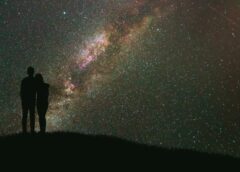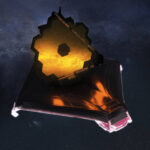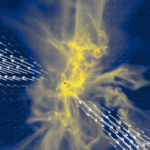The Perseids are a prolific meteor shower associated with the comet Swift–Tuttle. The meteors are called the Perseids because the point from which they appear to hail (called the radiant) lies in the constellation Perseus. The peak of the shower starts tonight and after midnight will go on through sunrise Saturday.
- Skywatch: Spotting the Green Comet!C/2022 E3 (ZTF) is a long period comet that was discovered by the Zwicky Transient Facility on 2 March 2022. The comet reached its perihelion on January 12, 2023, at a distance of 1.11 AU (166 million km) and the closest approach to Earth will be on February 1, 2023. Links: https://en.wikipedia.org/wiki/C%2F202…) https://www.wkyt.com/2023/01/10/green… https://stmdailynews.com/category/sci… #comet… Read more: Skywatch: Spotting the Green Comet!
- Perseid Meteor Shower Peaks TonightThe Perseids are a prolific meteor shower associated with the comet Swift–Tuttle. The meteors are called the Perseids because the point from which they appear to hail (called the radiant) lies in the constellation Perseus. The peak of the shower starts tonight and after midnight will go on through sunrise Saturday. TNCRod Washington: Rod is a blogger, writer, filmmaker, photographer, daydreamer who likes to cook. Rod… Read more: Perseid Meteor Shower Peaks Tonight
- Southern Delta Aquariids Meteor Shower Tonight!The Southern Delta Aquariidsare a meteor shower visible from the middle of July to mid August yearly with peak activity around July 29 to 30th. The meteor shower’s origin is not fully known or, for that matter, known with certainty. A probable source is Comet 96P Machholz. Some, in the past, thought that it probably originated from the… Read more: Southern Delta Aquariids Meteor Shower Tonight!
- NASA’s Webb Sheds Light on Galaxy Evolution, Black HolesThe close proximity of Stephan’s Quintet gives astronomers a ringside seat to galactic mergers and interactions In an enormous new image, NASA’s James Webb Space Telescope reveals never-before-seen details of the galaxy group called “Stephan’s Quintet.” The close proximity of this group gives astronomers a ringside seat to galactic mergers and interactions. Rarely do scientists… Read more: <strong>NASA’s Webb Sheds Light on Galaxy Evolution, Black Holes</strong>
- Planets of Binary Stars as Possible Homes for Alien LifeNearly half of Sun-size stars are binary. According to University of Copenhagen research, planetary systems around binary stars may be very different from those around single stars. This points to new targets in the search for extraterrestrial life forms. Newswise — Nearly half of Sun-size stars are binary. According to University of Copenhagen research, planetary… Read more: Planets of Binary Stars as Possible Homes for Alien Life

Rod Washington: Rod is a blogger, writer, filmmaker, photographer, daydreamer who likes to cook. Rod produces and directs the web series, CUPIC: Diary of an Investigator. He also produces news and documentary video projects. Check out his podcast StoriesThisMoment at https://m3e.d71.myftpupload.com/stm-tncn-podcasts/






